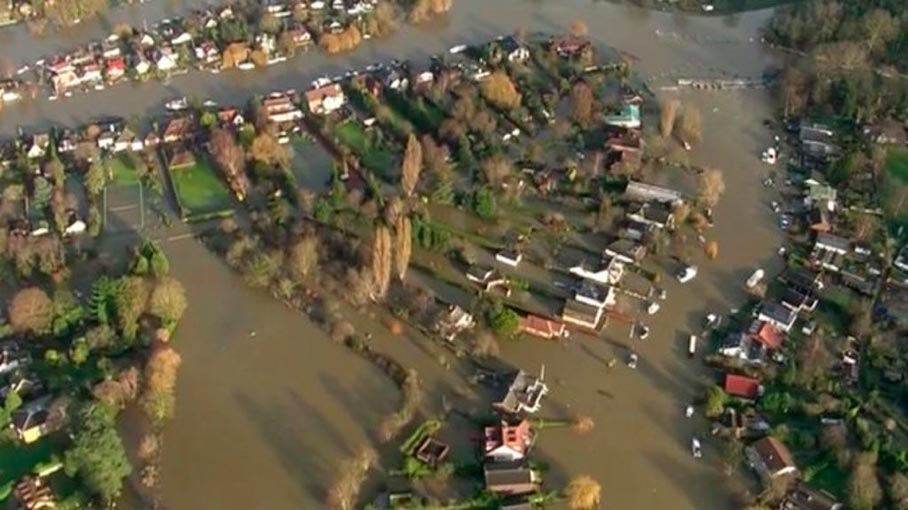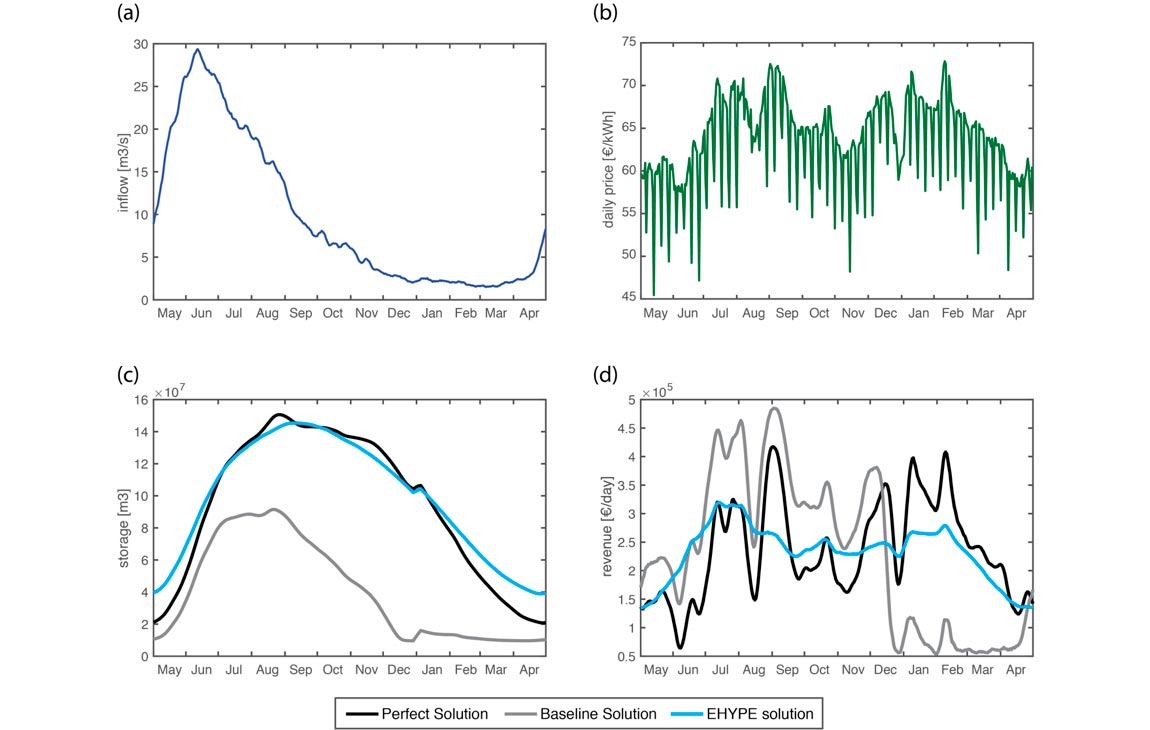
Aerial footage of the 2014 flooding on the Thames (source: BBC - https://www.bbc.co.uk/news/av/uk-25679668/uk-floods-environment-agency-warns-of-further-flooding).
The forecasting-optimization team at a hydropower company, who has to decide what forecasts they should use to optimize dam operations
E-HYPE seasonal river flow forecasts based on meteorological (precipitation and temperature) seasonal forecasts
To evaluate how hydropower revenues differ when dam operations are optimized using different forecasts as inflows to the water reservoir
Numerical weather forecasts are used as input to the E-HYPE hydrological model to produce river flow forecasts. The 90-day accumulated inflows from the E-HYPE forecasting system are used as inflow forecasts.
Forecasts are used to inform the operation of the hydropower reservoir. Knowing the day of the year and the associated reservoir storage level, the model can allocate the hydropower production for the current day. The operations of the turbines are then optimized, with hourly allocation of the intra-day production in the most profitable hours of the day. Profitable hours are those with the highest electricity market prices. Prices are based on recent data from the Italian energy system. Revenues can be calculated based on the energy production and the electricity prices at the time of production.
The results below illustrate the average hydropower operations when using the following forecast information:
Baseline solution (gray line): the model is informed by a naïve forecast, which is the inflow climatology (based on past observed flows).
It represents the most basic information one can have if only historic observations (no numerical forecast models) are available.
Perfect solution (black line): the model is informed by a perfect knowledge of future inflows (actual observed flows).
It represents the best situation one could have if the future inflows were known in advance.
E-HYPE solution (cyan line): the model is informed by the 90-day accumulated inflows from the E-HYPE forecasting system.
It represents an intermediate situation between the previous two: the forecast information is used to improve the reservoir operation providing information on future inflows over the next 90 days, given updated meteorological and hydrological conditions.
| Forecast information used | Average hydropower revenue per year | Absolute gain relatively to baseline solution | Relative gain relatively to baseline solution |
|---|---|---|---|
| Baseline solution | 83.64 M€/year | -- | -- |
| Perfect solution | 86.46 M€/year | +2.82 M€/year | +3.4% |
| E-HYPE solution | 85.02 M€/year | +1.38 M€/year | +1.6% |

Average monthly values of reservoir inflows (top left), daily electricity prices (top right), reservoir storage levels (bottom left) and hydropower revenue (bottom right) for the three solutions investigated (perfect in black, baseline in gray, E-HYPE in cyan), representing different forecast information used as inflow to a hydropower reservoir model.
Seasonal inflow forecasts in this snow-dominated Alpine basin in Italy suggest storing snowmelt volumes and allocating the production in the period January-March, when the price of electricity is high. When using the solution based only on climatology, with no forecast model information, the reservoir management model does not see this opportunity and allocates the production in the fall, resulting in an empty reservoir at the end of the year, with, consequently, low future revenue opportunities.

Four-month hydrological forecasts from EFAS-Seasonal. (a) Ensemble hydrographs for streamflow (light blue) and groundwater levels (dark blue) for the Lower Thames (LT) catchment. Exceedance thresholds (based on records from 1994 to 2014) are shown as Q10 (dashed line) and Q50 (dotted line). (b) Choropleth map shows the maximum probability that the full hydrograph ensemble for a catchment exceeds the Q10 streamflow threshold in a given month.

Same as above, but based on the “improved” EFAS-Seasonal forecast.